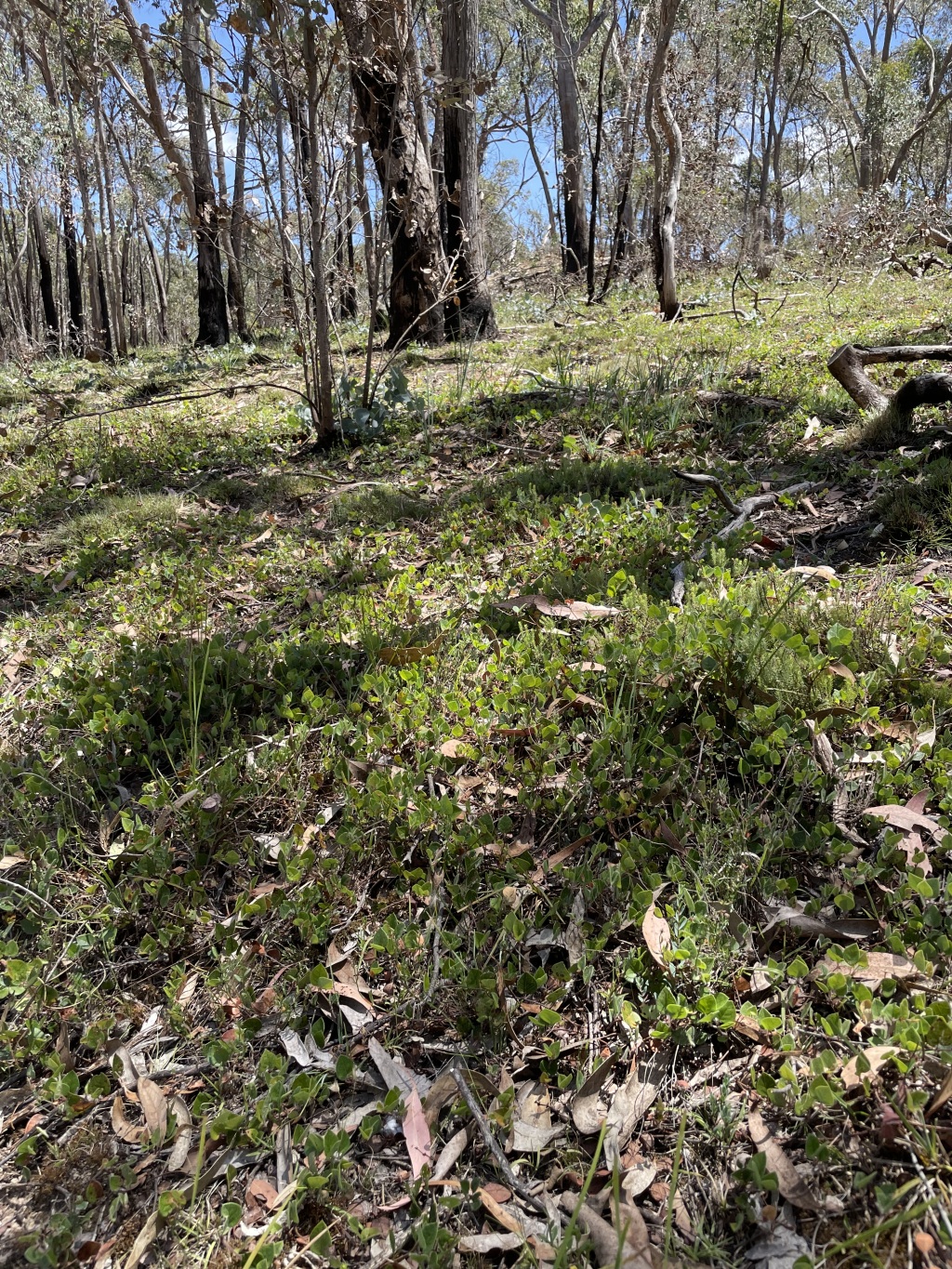Platylobium montanum subsp. prostratum
I.Thomps.Widely spreading, prostrate shrubs, rooting at nodes. Leaves opposite, occasionally with a portion of leaves alternate; base shallowly cordate, truncate or rounded; petiole 3–15 mm long. Flowers sporadic and often relatively few flowers produced; pedicels 15–25 mm long; bracteoles inserted 1–7 mm below receptacle; calyx 6–10 mm long, upper lobes 4–7 mm wide. Pods rarely developed. Sep.–Nov.
VVP, GipP, Gold, CVU, EGL, EGU, HSF, HNF. Occurs on the southern side of the Great Dividing Range, growing in the understorey of woodland and open forest.
Generally distinguished from Platylobium montanum subsp. montanum by its prostrate habit. However, intermediates may be found where the two subspecies co-occur (e.g. near Taradale). Platylobium montanum subsp. prostratum resembles P. infecundum and P. rotundum (both also prostrate, with rounded leaves, and somewhat infecund), the latter distinguished by its consistently alternate leaves, and the former distinguished by its less hairy calyces, recurved bracteoles, and petioles that can exceed 15 mm long.
 Spinning
Spinning